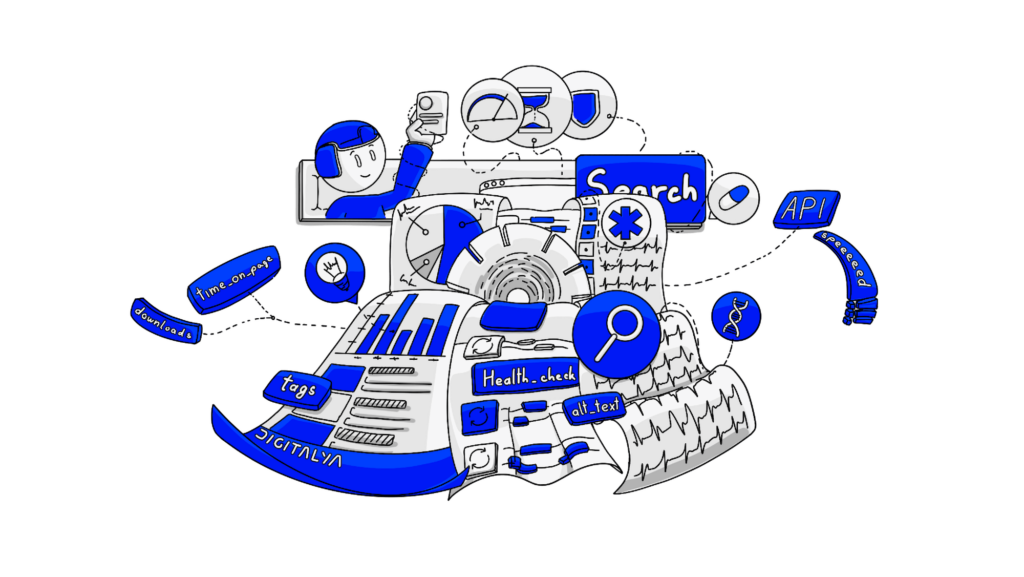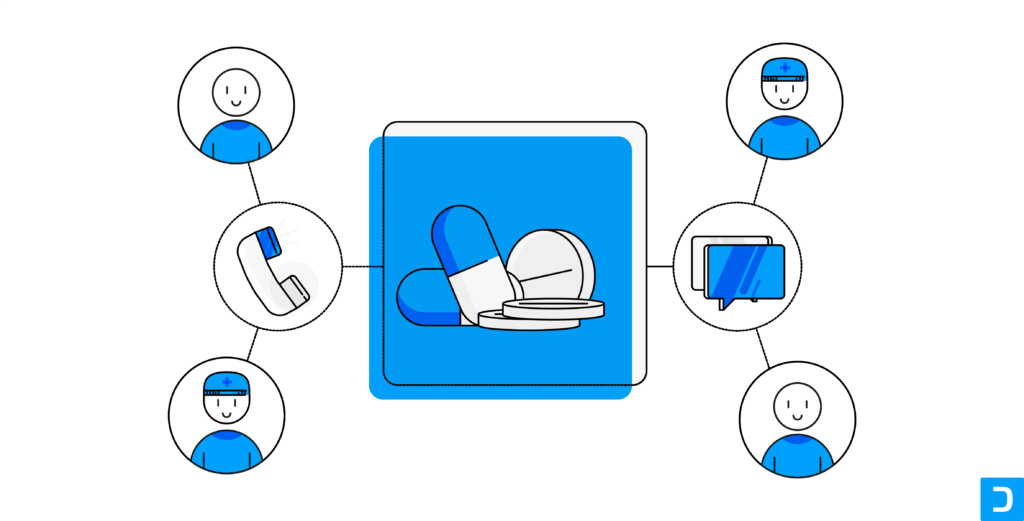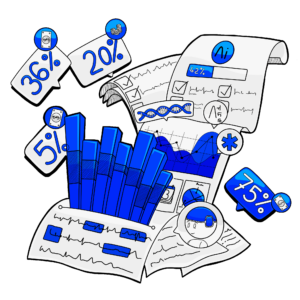Building a successful application is the dream of every tech entrepreneur. While some of them succeed, most of them don’t. What makes the difference? A huge difference is made in the approach people have toward the app they want to build, and how attached they are to their product idea.
Another key factor that makes it or breaks is identifying a problem to solve for a well-defined audience. Some people know for sure what they want to build and go for it, investing thousands of dollars in a product without validating if anybody would buy it. And some people first test the market, gather feedback, and build a product based on what people need.
For the second ones, the ones who put the client’s needs and feedback first, we have written this article on MVP development and created an extensive guide on what makes an MVP successful.
1. How do you define MVP?
The minimum viable product is a concept introduced by Eric Ries in the Lean Startup methodology. And he defines the MVP as:
The minimum viable product (MVP) is that version of a new product which allows a team to collect the maximum amount of validated learning about customers with the least effort.
So, an MVP is a product with just enough features to attract customers to validate a business idea.
2. What is the purpose of an MVP?
The purpose of the MVP (minimum viable product) is to test the market.
An MVP is the first version of a product – v1. It includes the minimum set of features that potential clients would need in order to assess if the product is worth spending money on or not.
Besides validating the product, the purpose of an MVP is to gather feedback for future product development. For example, if a client validated the MVP and he’s sure he will use it, he will most probably provide feedback on the usability and future functionality of the product.
So, first of all, the purpose of an MVP is to test the product with potential clients and early adopters, and second of all, to gather feedback and suggestions on future functionality.
3. What is MVP development?
MVP development represents the actual process of defining and building your MVP. In this stage, you will work with an experienced UI/UX designer who will help you identify your customers’ pain points, map out the user’s needs, create user journeys, and build an eye-catchy app design, taking into account the latest design practices. Then a development team will take over the design and build the core functionalities in your MVP based on your business objective.
In the MVP development process, it is helpful to work with a company like Digitalya that can help you with the UI/UX design, choosing the right features for the MVP stage, and building a high-quality product.
Throughout the years, we worked with hundreds of startups to build and scale their applications, and we understood the key differences between a successful MVP and an unsuccessful one. Though we added key lessons in this article, it’s important to have a personalized discussion on your needs. So, if you’re in need of MVP development services, drop us a line.
4. What are the benefits of creating a minimum viable product?
The benefits of creating a minimum viable product are numerous, from cost savings to gathering user feedback early on. Let’s take them one by one.
Benefits of building an MVP:
Reducing development costs
Building an MVP with just the basic functions and gathering feedback early on helps you have money in the long run. Instead of investing thousands of dollars in building a product with all the functionalities you think that a user would need, it’s way better to test the market early on with a sample of the product and invest in further custom development based on user feedback.
Minimizing risk
Entrepreneurship is pretty risky as we know it, and in the tech world, everything depends on how the users interact with the product: do they like it? Do they consider it useful? Would they buy it? Building an MVP helps you answer these questions and map out user needs from the beginning, minimizing the risk of failure.
Quick launch
The fact that you can have a quick MVP launch and you can go into the market in only four to six weeks it’s really great. You can test different marketing & sales channels; you can identify the audience most interested in your business idea and collect feedback for scaling your business and building the next version of the product and then the final product.
Finding investment opportunities fast
Having a software product launched and tested in the market can only ease your way into applying to the best accelerators, getting funding, and moving to the next stages of development. The MVP approach helps you support your vision and value proposition with demonstrated experience, which will build on your trust in front of investors.
Identifying the target market
By launching an MVP, you create a context for discovering your potential clients, you start having meaningful conversations about what they want and what your product provides. You test, you iterate, and you test again. By offering a sample of your product with just the core functionalities, you can test different markets and see where people actually have the need. To put it in fewer words, you manage to get market validation.
Getting paying customers early on
With an MVP, you can showcase your vision and offer potential customers a hands-on experience using your software. By gathering feedback from them and implementing it fast into the app, the chances of converting them will increase drastically. Early adopters love to test new tools and see them grow in front of their eyes. They are basically contributing to improving the product while customizing it based on what they need.
If you’re curious to see some examples of MVPs, you can check this article we wrote about five minimum viable examples.

5. How long does it take to create an MVP?
Developing an MVP usually takes four to six weeks of implementation, meaning two to three sprints. Of course, this depends on the development team’s experience and the core functionalities of the MVP.
In the process of building an MVP, there are some key phases, the design phase, the application development phase, and the MVP launch. It’s important to have a reliable tech partner in this journey, preferably one that offers full-cycle development, from design services to app development and hosting.
6. How do you prioritize features for MVP?
Prioritizing the right features on your MVP will ensure your product’s success, but choosing just the core functionality of your MVP, it’s not an easy task to do. It’s not something that you do spontaneously; you need to do your research.
Solving a really painful problem for a well-defined audience makes an MVP successful. So let’s see what the steps you need to take to define your core features are.
Step 1: Identify the target audience
Start your research by creating buyer personas. Then, conduct user interviews and identify what’s important for your target audience. A helpful process when identifying your target audience is the Product Validation Workshop, which helps you to test your idea with a clickable prototype.
Step 2: Find out what’s the most painful problem for your audience
Finding the most painful problem for your audience and solving it with custom software will be your launch pad. See what they need, what they want, what’s their pain point, and what gets them the most annoyed. And really important, see how your potential customers solve their issues right now. What are the alternatives?
Step 3: Define the MVP functionality
Ask yourself what the minimum feature set needed to solve the problem you identified is. Then, refine those key features and make sure that the list really represents the minimum functionality needed.
Step 4: Choose the simplest version of implementation possible
Make sure you understand what you need from the software development perspective, both frontend development and backend development. Then choose the simplest version of implementation possible (for example, you might have a permission-based approach. First, you can start small, like the type of users, and then define and build an ACL).
Order your feature sets following a user flow (you might need an authentication system first) and embrace the agile development mindset. The great thing about agile software is that it is based on iteration, and you can adapt it to your needs from sprint to sprint.
Step 5: Implement the MVP and go live
While in the product development process, ensure your core features are working properly, and do not look for perfection on secondary features. Stick to the roadmap. You can always go back and refine the application once you launch it.
Step 6: Review and collect feedback frequently
Feedback from your target audience will help you grow your product with just the necessary features your users need. So prioritize the feedback you get before going to the next feature.
7. What are the stages after MVP?
On a high level, the stages that follow MVP development are feature-based app development and maintenance. After you develop your MVP, you gather feedback and build the final product. In this process, you basically scale your product by working with a dedicated team that will help you prioritize the next features.
After the development team creates the final product, you enter a maintenance stage where you will be offered support on your application. From MVP to final product to maintenance is a common process in mobile app development and web app development.
On a micro level, after the MVP stage, the Minimum Marketable Product follows, then the Minimum Lovable Product, and then feature-based app development and maintenance.
To have a better understanding of the terms, we summed them up here:
- Minimum Marketable Product (MMP): The version of the MVP that can be presented to the market to gather feedback
- Minimum Lovable Product (MLP): The version of the MVP where the core functionalities are improved and made loveable with the purpose of making the customer fall in love with your product.
8. How much does a software MVP cost?
The costs of an MVP differ from country to country and even company to company. A rough estimate of the MVP costs is from $24,830 to $59,150 if the MVP is simple and the development takes between 4.5 to 11 weeks of development, and from $36,107.5 to $85,150 if the development takes from 7 to 16 weeks. If you’re curious to read more about How much does it cost to build an app, you can check another article we wrote on app development costs.
9. Conclusion
There are billions of startups out there; some of them succeed, and some of them don’t. We hope that the experience we shared on MVP development in this article and in the What makes a successful MVP guide helped you have a clear picture of the steps you need to take to launch an MVP and make it a successful product.










